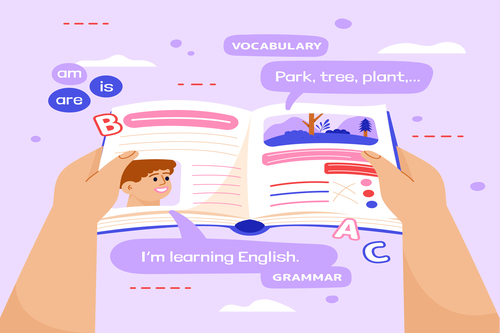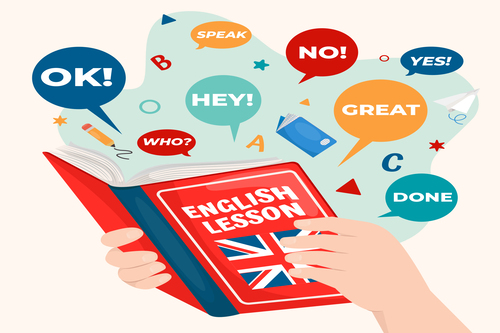Table of Contents
Subject-verb agreement rules | What is subject-verb agreement?
While studying English grammar, you must have come across the term subject-verb agreement rules. It is a set of rules that help you understand and write error-free sentences. By knowing all the rules related to subject-verb agreement, you can comprehend any sentence and use the same method in your writing.
As the name suggests, subject-verb agreement can be considered an accordance between the subject and verb of a sentence. It mainly focuses on the subject, which can be singular or plural nouns as well as pronouns. For example, He goes to school – in this sentence, there is an agreement between the subject ‘He’ (which is singular in form) and the verb ‘goes’ (which is also singular).
As per the general subject-verb agreement rules, if the subject is singular, then the verb also needs to be singular. Similarly, if the subject is plural, then the verb should be plural as well. Although this is the most common of the subject-verb agreement rules, there can be some exceptions as well. In this article, we will discuss some of the subject-verb agreement rules with examples.
Subject-verb agreement rules with examples
When a sentence is in the present tense, the subject-verb agreement rules play a pivotal role. Mostly the sentences structured in simple future tense and in simple past tense have the same verbs, therefore, the subject-verb agreement rules are not thoroughly applicable in this scenario. However, when writing sentences in the present tense, the application of the subject-verb agreement is extremely important.
Let us have a look at the subject-verb agreement rules with examples and understand how it works with sentences.
Rule number 1

The very first rule among the subject-verb agreement rules has already been discussed before, but to reiterate, we can say that you need to use a singular verb when a singular subject is available in a sentence, and if the verb in the sentence is plural then you will have to consider using a plural verb. The subject in this sentence can be a noun, noun phrase, or pronoun.
For example, Ricky needs to purchase a guitar. (Singular subject with a singular verb) Salma and Mithila are going to a swimming class. (Plural subject with a plural verb)
Rule number 2
There is an exception to the subject-verb agreement rules when you are using ‘be’ verbs to construct sentences. For example, if you are using ‘I’ as a subject, then you need to use ‘am’, and if you are using ‘we’, you will have to use ‘are’. Similarly, for using ‘you’ as your subject, you need to use ‘are’, for ‘he/she/it’, you will have to use ‘is’; and for ‘they’, you need to use ‘are.’
While using verbs with different nouns and pronouns, the same rule is applicable. Even in the past continuous, simple past, and present continuous, the rules of using verbs do not change.
To understand the same, let us have a look at some examples-
- Michael is a good student.
- Jeremy likes reading books.
- I was cooking dinner in the kitchen.
Rule number 3
When constructing a sentence in the present perfect continuous tense and in the present perfect tense, if you are using ‘has/have’ as the main verb, their use case will depend on the subject. For singular subjects, you need to use the ‘has’ verb, and for plural subjects, you will have to use the ‘have’ verb.
For example-
- She has two children.
- Namitha has a kitten in her house.
- They have been studying for a long time.
Rule number 4
If you use ‘and’ in the subject part of the sentence, then you will have to use a plural verb.
For example-
- Sakina and Mashira are going to Dhanbad.
- Richard, Aman, and Shelly are traveling together.
Rule number 5

If you are using a conjunction like ‘or’ to connect two subjects together, then the entire subject will be regarded as singular, and you will also have to use a singular verb to construct the sentence.
For example- Ranjan or Vishal need to go to the site within an hour.
Read more: Proper Nouns | Understanding the significance and usage
Key takeaways
- The above-mentioned rules of subject-verb agreement are extremely important in order to create perfect and error-free sentence structure while writing.
- If you are unfamiliar with some of the rules, you can go through them and practice exercises to grasp them properly.
- Every single sentence is constructed by following the subject-verb agreement rules.
- The most common rule of subject-verb agreement is that the singular subject goes with singular verbs, and the plural subject goes with plural verbs.
- The subject-verb agreement is mostly applicable in cases where sentences are framed in the present tense because the sentences in simple past tense and in simple future tense have the same verbs.
We hope you enjoyed reading this blog. In case of any queries, or assistance with improving your English, reach out to us or drop a comment below.
Liked this blog? Read next: What is ‘narration’ in English grammar?
FAQ
Q1. What are some common errors in subject-verb agreement?
Answer- Some common errors in subject-verb agreement include using a singular verb with a plural subject, using a plural verb with a singular subject, and not making the verb agree with the subject in terms of person.
Q2. How can I identify the subject in a sentence?
Answer- The subject is the noun or pronoun that performs the action in the sentence or that the sentence is about. To identify the subject, ask yourself who or what is doing the action in the sentence.
Q3. Are there any exceptions to the subject-verb agreement rule?
Answer- There are a few exceptions, such as with certain expressions of quantity, where the verb is determined by the noun that follows the expression rather than the subject. For example, “Ten dollars is a lot of money” (singular verb because “dollars” is singular) and “Ten dollars are on the table” (plural verb because “dollars” is plural).






